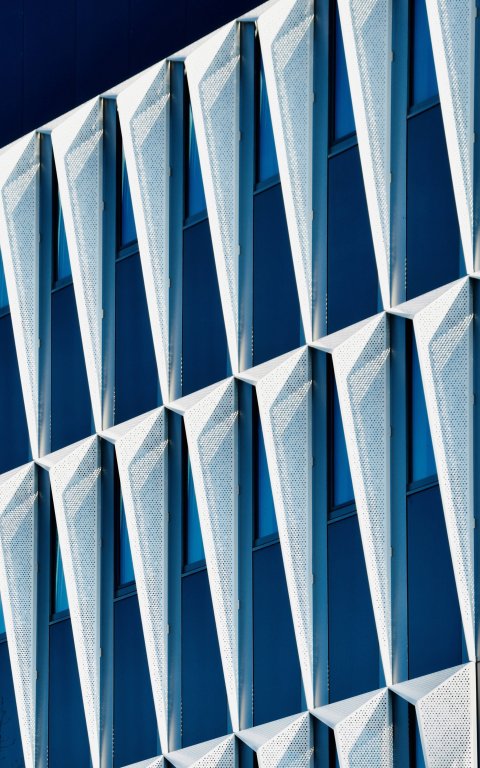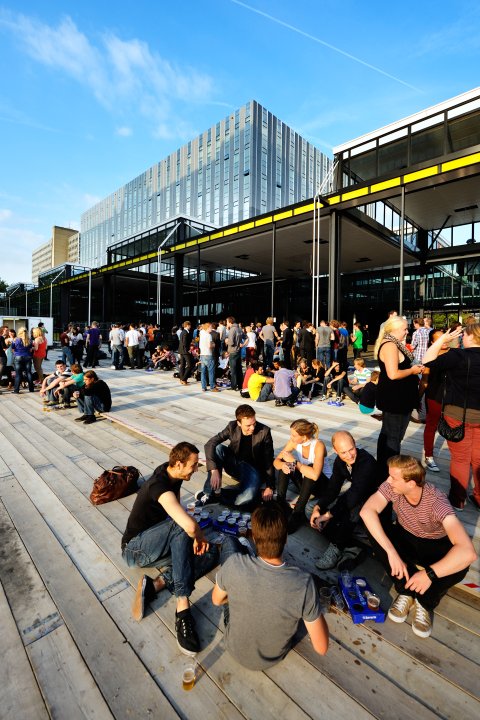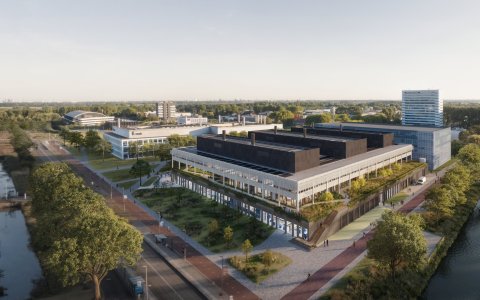
Physics, TU Delft
A few years ago, a section of Delft University of Technology’s Faculty of Applied Sciences relocated to new premises in the south of the city, settling into a building designed by Ector Hoogstad Architecten. The area has since undergone further development, and is now known as the university’s “southern campus”. The goal is to relocate the rest of the faculty to the site directly opposite the ‘Applied Physics’ building. EHA was once again chosen for the commission, which goes by the bold and succinct name of “Physics”, and the definitive design has been completed.
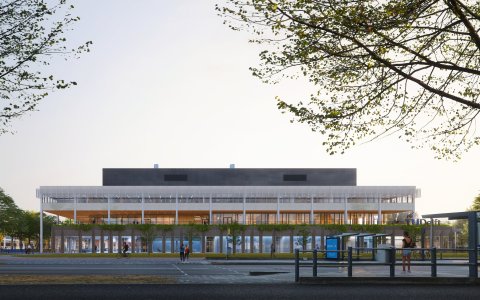
Project details
Name Physics
Client TU Delft
Location TU Delft South Campus
Status Completion Q4 2026
Architect Ector Hoogstad Architecten
Building costs consultant IGG
Building physics, fire safety and accoustics RHDVH
Construction management Aronsohn Management
Engineering consultant Pieters Bouwtechniek
Installations consultant RHDHV
Lab design Deerns
Vibrations control and EMC Peutz
Deceptively simple
The accommodation requirements are simple enough: laboratories, lecture rooms for practical work, staff offices and ancillary facilities such as workshops, dispatch and a restaurant. Yet the apparent ordinariness of these functions belies the complexity of the project. The laboratories, for instance, are to be some of the most advanced of their kind, and are required to meet the most stringent criteria in terms of vibrations, electromagnetic disturbances, radiation, air purity, and temperature stability. These requirements are a necessity given the faculty’s dedication to pioneering research in the fields of quantum nanoscience and imaging physics.
The key to executing projects such as this successfully is to conduct a thorough analysis of both the technical and spatial requirements as well as the building the context within its surroundings. With regard to the latter, the university’s explicit instruction was to deliver a building that makes a clear architectural statement and that enhances the appeal of its location within the campus, both by its overall design and by what is visible to passers-by at street-level. There are also several invisible environmental factors to consider, such as the potential effects of existing and planned infrastructure, which determine the precise location of the various laboratories.
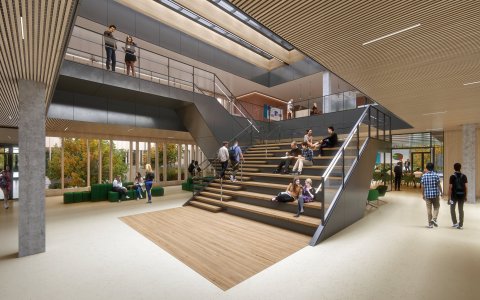
Different worlds
The design stacks four “worlds” atop one another, each with its own character. The criteria in the brief require the laboratories to be located on the ground floor. We have used this requirement to our advantage by encircling the labs with circulation space that is bordered to a large extent by a glass facade that goes all around the building. This will allow passers-by to catch glimpses of some of the faculty’s spectacular test rigs.
Lecture rooms, student labs and a large multifunctional education hall are located on the first floor, and are arranged around bright and airy study rooms. This first floor façade is set back, to allow for a perimeter roof garden, allowing students and employees to enjoy some fresh air and sunshine whilst studying or simply take a walk around the block. Staircases lead from the roof garden to the surrounding landscape and provide access to the faculty via the first floor.
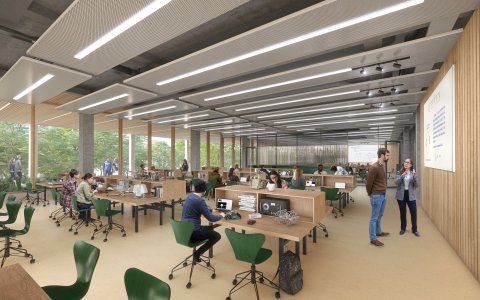
Orientation towards the sun
The second floor contains offices, and juts out over the first in dramatic fashion. The design for the composition of this floor was informed by the desire to create a varied working environment defined by distinct workplace formats. Four patios, at different levels, bring natural light into the space and integrate nature in the building through interior landscaping.
The top of the building consists of multiple volumes for the necessary building services. Roofs and façade elements, oriented in relation to the sun’s path, will be fitted with solar cells for energy generation. These and other sustainable measures are geared towards achieving a BREEAM Excellent rating, an ambitious goal for a laboratory building but one we have proven to be achievable.
Co-design
The design was created through a series of co-design sessions with future users, consultants and other stakeholders. These took the form of participatory workshops, dedicated to individual themes that included everything from vibration-isolation to adaptability. This iterative process allowed us to produce an optimal design that aligns user needs with aesthetic considerations, and also lends itself to further adaptation as research and educational methods and requirements evolve.

